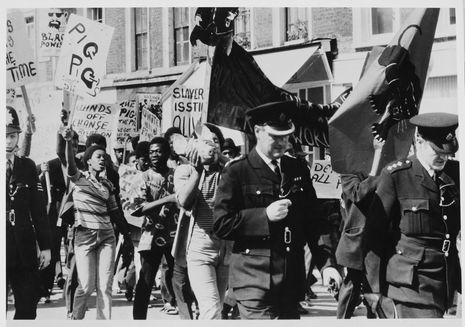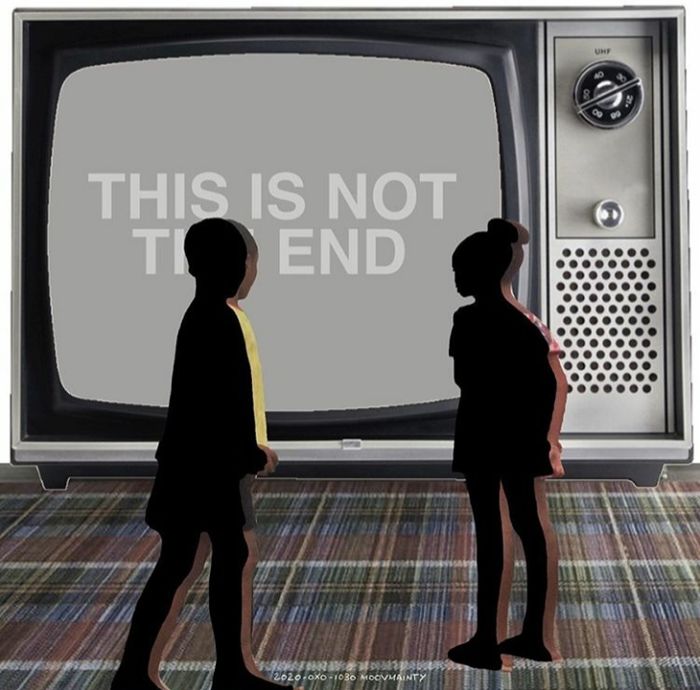‘BAME’ is an outdated term, struggling to define the experiences of those who do not identify as White
Sawen Ali criticises the homogenising nature of the term ‘BAME’ and illuminates areas where its usage is becoming increasingly insufficient as an umbrella term, despite historical collaborative anti-racist organising in the UK.

Content Note: This article contains discussion of racism.
One of the most sobering conclusions we have come to as a society is that the current COVID-19 pandemic is not a social leveller, but rather a magnifier of existing inequalities within British society, and there has been a rare moment where Black, Asian and minority ethnic communities have been put into the spotlight. “Why are more people from BAME backgrounds dying from coronavirus?” BBC News asked on 7th May. As a person of colour myself, the headlines about the deaths of those from ‘BAME’ backgrounds have been incredibly alarming.
But pick apart those statistics a little, and you will find that there is more to this picture than meets the eye. According to the University of Oxford’s Centre for Evidence-Based Medicine, the group most at risk of dying from COVID-19 in the UK by far is the Black Caribbean ethnic group, with almost 80 hospital deaths per 100,000 people, closely followed by those of ‘other’ Black backgrounds (excluding African) and Indians. In contrast, Chinese people are statistically less likely to die of COVID-19 than White people. However, Chinese people, along with Black people, Arabs, Indians, and all other non-White people are all put together under the term ‘BAME’, which has homogenised the experiences of those who are not White and concealed the fact that Black Caribbean people are dying at a far higher rate than their so-called BAME counterparts.
"... our current language does not account for the different ways in which different ethnic minorities experience racism."
The term ‘BAME’ describes around 14% of British people who do not identify as White. Discussions around race and ethnicity in the UK have long centred on this White/non-White dichotomy, as historically, non-White people have banded together in the UK to fight race-based discrimination, such as under the political blackness movement. However, as these discussions have developed, it has become apparent that not all non-White experiences are equal, and our current language does not account for the different ways in which different ethnic minorities experience racism.
A glaring example of this is the way the terms ‘BAME’ and ‘Black’ are often conflated to present a misleading idea that our justice system, our educational system, and our class system inflicts the same structural oppression across all non-White groups. It is no secret that Black Britons are far more likely to be stopped and searched, excluded from school, or end up homeless than not only White people, but also their Asian counterparts. To conceal this anti-Blackness under the guise of it being a ‘BAME’ experience not only obfuscates from the material reality that Black people live within, but also trivialises the Black struggle for equality in the UK.
To take a different approach, according to the Social Mobility Commission, Indians have enjoyed high rates of social mobility within the UK, but this has not been the case for those from Black, Bangladeshi or Pakistani communities. To call this a success for ‘BAME’ communities overall, or even ‘South Asian’ communities, would be dishonest, to say the least. By labelling all non-White people as ‘BAME’, a company with a couple of Arab employees amongst a majority of White employees, for example, could feasibly say it has a racially diverse workforce, despite the absence of any Black employees, or indeed any non-Arab minority ethnic group.
"...despite a long history of uniting together to fight racism, it would be duplicitous to suggest that BAME groups are in perfect racial solidarity with one another."
This issue could not be clearer in the political sphere. In 2017, when Diane Abbott misquoted costs regarding Labour’s plans for recruiting new police officers, she was subject to a vitriolic dogpile from not only the media, but by Britons on social media. By contrast, Priti Patel’s recent failure to correctly quote the number of coronavirus tests carried out on 11th April attracted far less ire from the British media and public. To call what happened to Diane Abbott simply ‘racism’ would imply that the same level of outrage would be provoked by another ‘BAME’ politician who did the same thing. It therefore is much more fitting to call what happened to Ms Abbott ‘anti-Blackness,’ a specific form of institutional racism that underpins British society today. In fact, her experiences as a Black female MP, joined by only a dozen others of the same background, can be described as experiences of ‘misogynoir,’ a term that specifically describes the racism experienced in the intersection between Black and female. Essentially, racism is experienced differently and to different degrees by different groups of people, and the term ‘BAME’ simply does not account for this.
Furthermore, despite a long history of uniting together to fight racism, it would be duplicitous to suggest that BAME groups are in perfect racial solidarity with one another. Anti-Blackness is rife within non-White communities: first-hand, I have heard extended family members make throwaway derogatory comments about Black people, despite experiencing racism and Islamophobia themselves. Experiencing a particular form of racism does not make somebody immune from perpetuating another, but discussions about this are blunted by the false idea that all racism is the same and by extension that all ‘BAME’ people have the same life experiences and values.
However, I understand that finding the right terms is difficult. I sometimes use the more American phrase ‘person of colour’ to refer to myself and more general experiences that non-White people share, but this does not fundamentally solve the problems that the term ‘BAME’ poses. At its crux, my life is not a BAME life. I am not simultaneously Black, Asian and minority ethnic. I am Kurdish, and I pass as white, and my experiences are incomparable to the suffering that many of my non-White siblings face. The time has come to do away with the White/non-White dichotomy and to start encouraging a more nuanced debate around the material circumstances and experiences of different minority groups by name, and this discussion starts with the vocabulary we use.
 News / Cambridge bus strikes continue into new year16 January 2026
News / Cambridge bus strikes continue into new year16 January 2026 News / Uni members slam ‘totalitarian’ recommendation to stop vet course 15 January 2026
News / Uni members slam ‘totalitarian’ recommendation to stop vet course 15 January 2026 Science / Why smart students keep failing to quit smoking15 January 2026
Science / Why smart students keep failing to quit smoking15 January 2026 Interviews / The Cambridge Cupid: what’s the secret to a great date?14 January 2026
Interviews / The Cambridge Cupid: what’s the secret to a great date?14 January 2026 Comment / Will the town and gown divide ever truly be resolved?12 January 2026
Comment / Will the town and gown divide ever truly be resolved?12 January 2026









